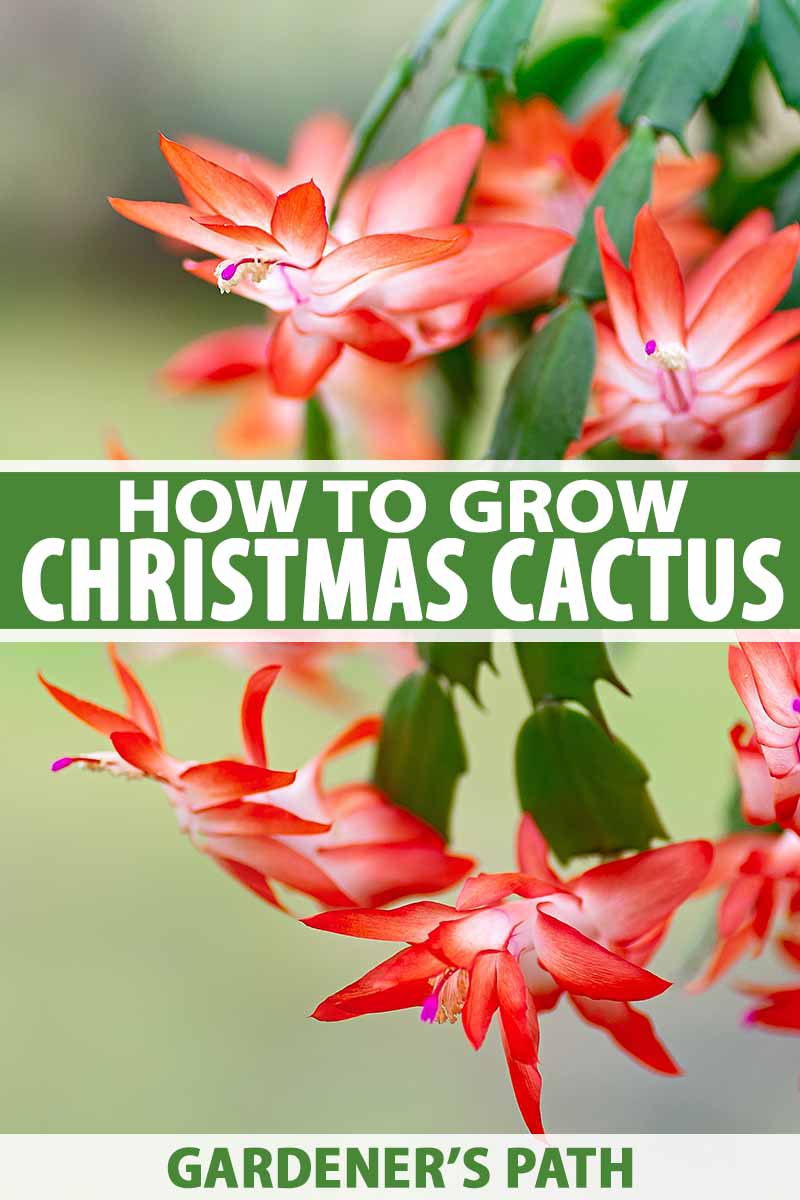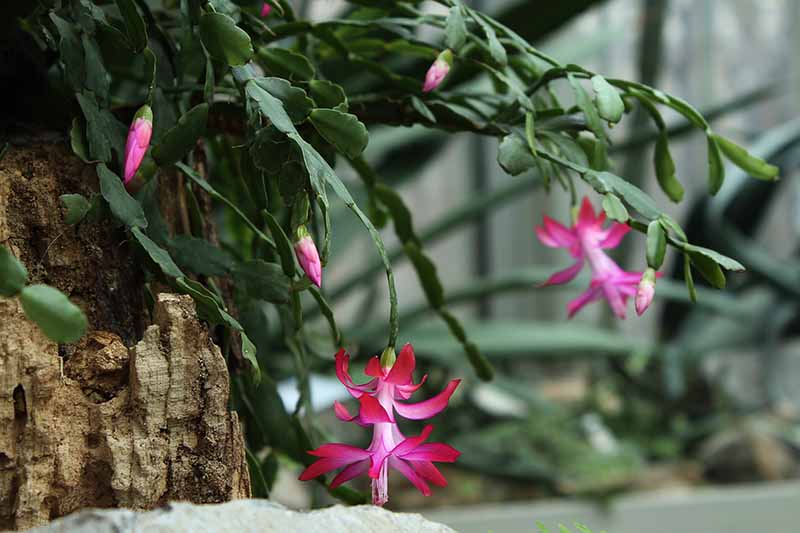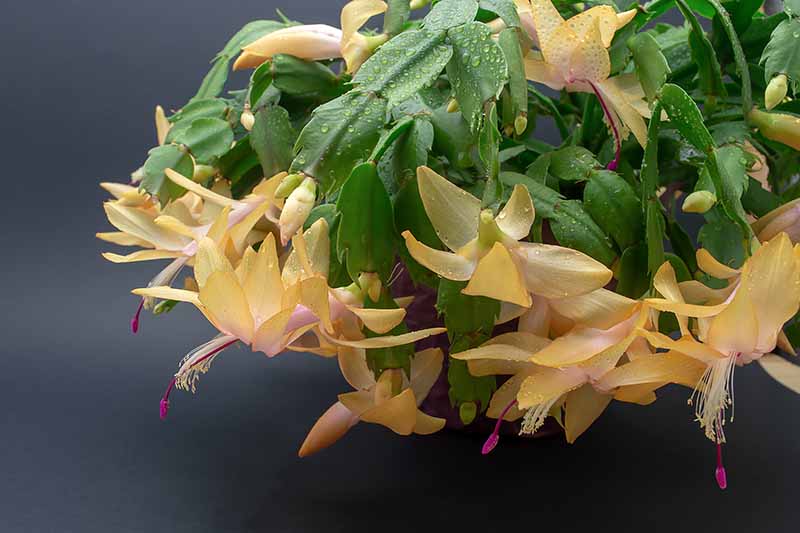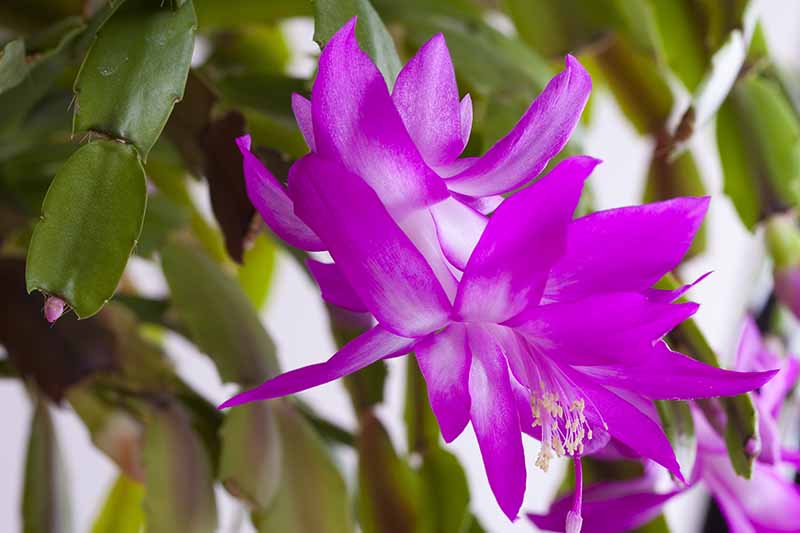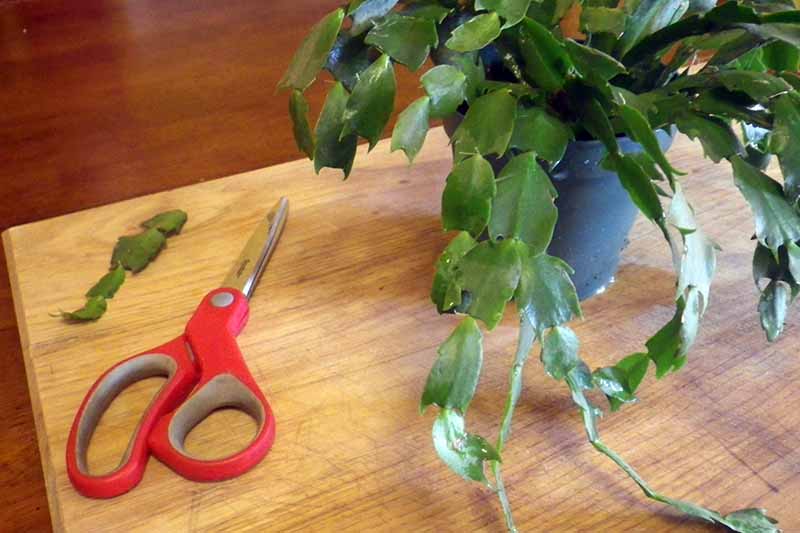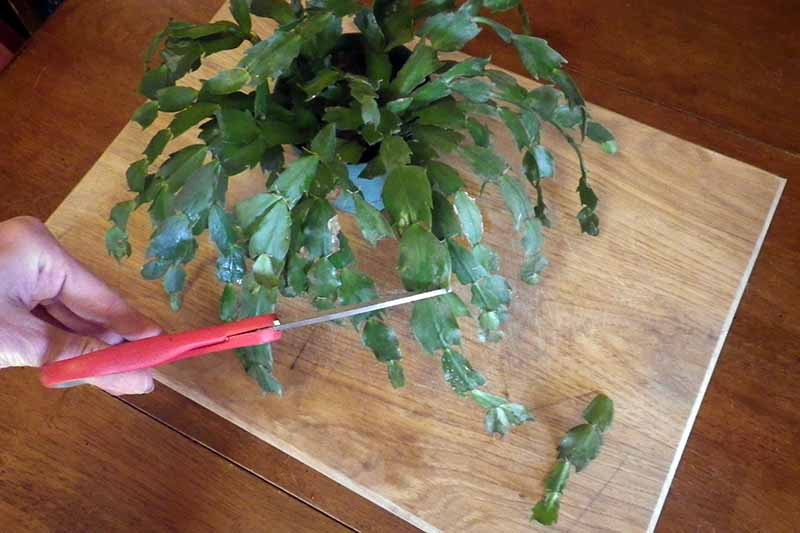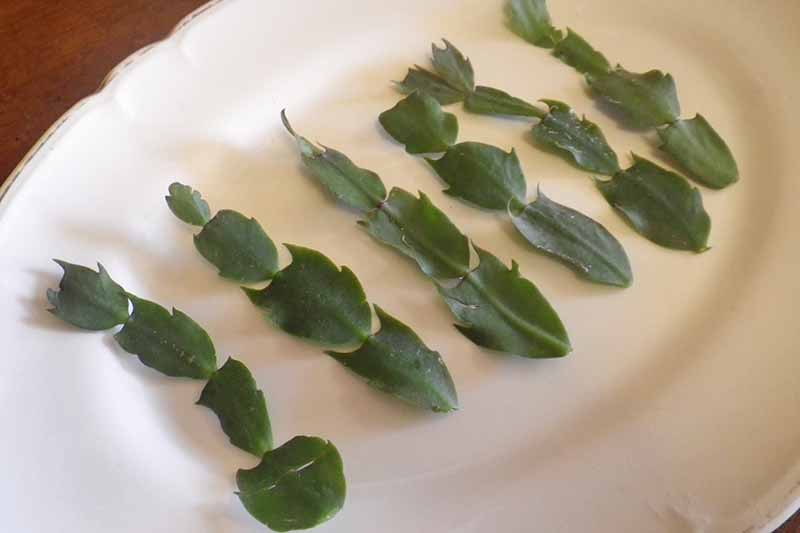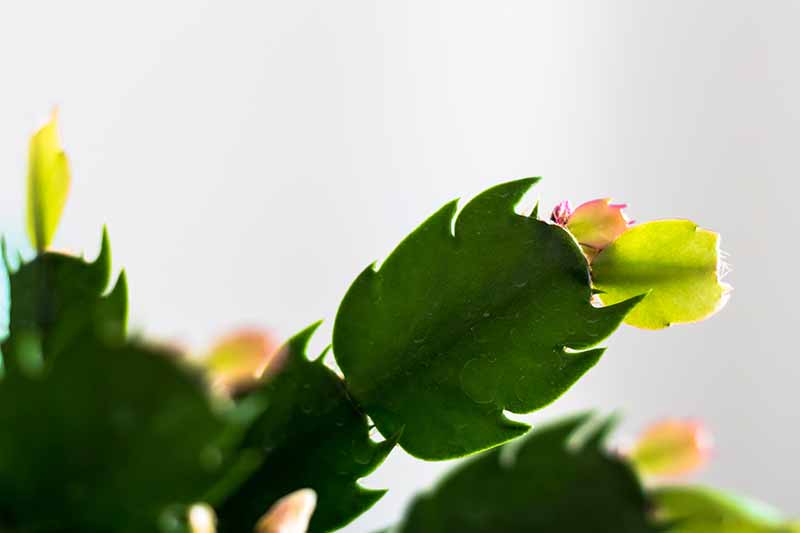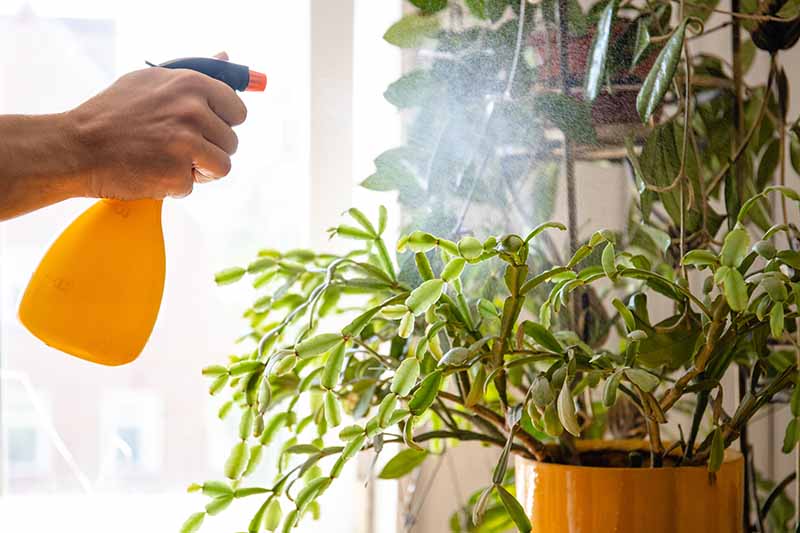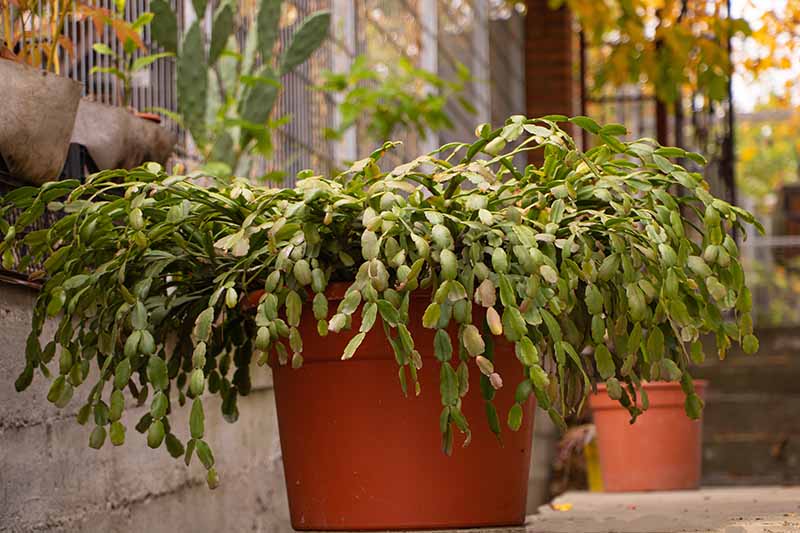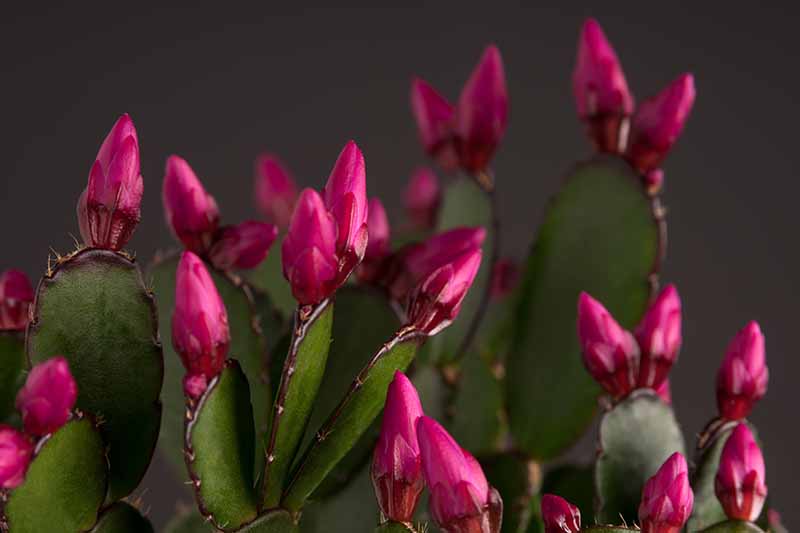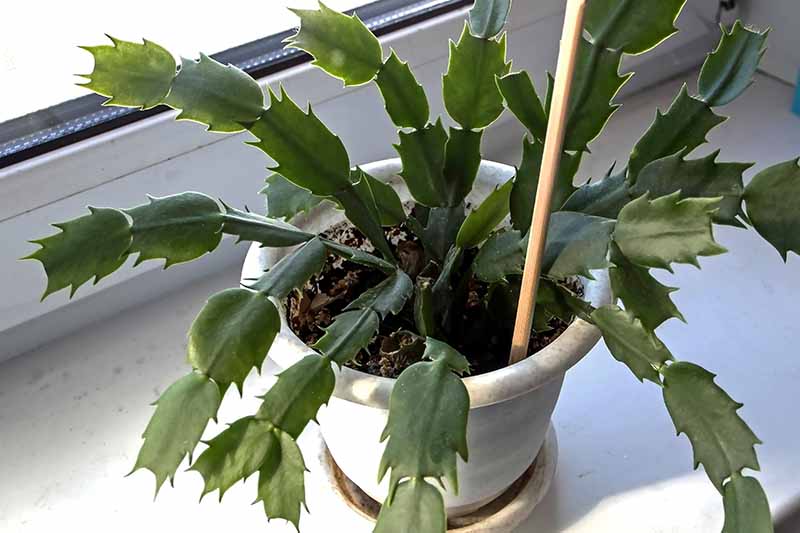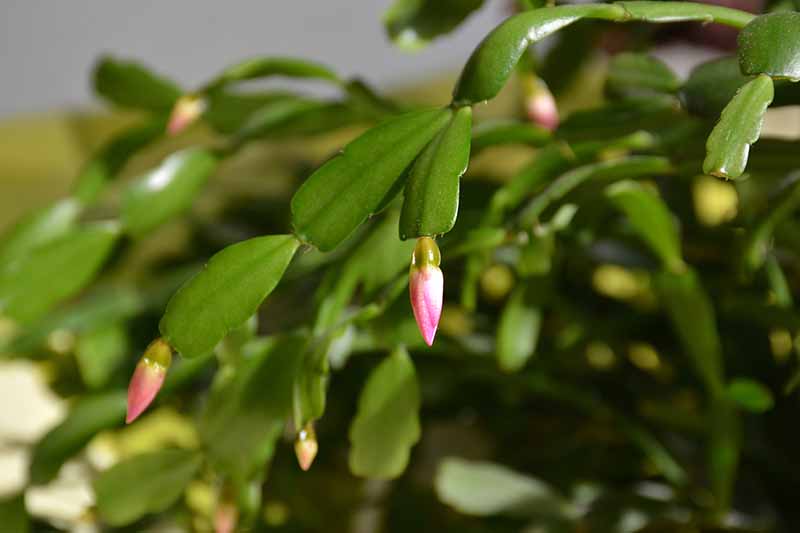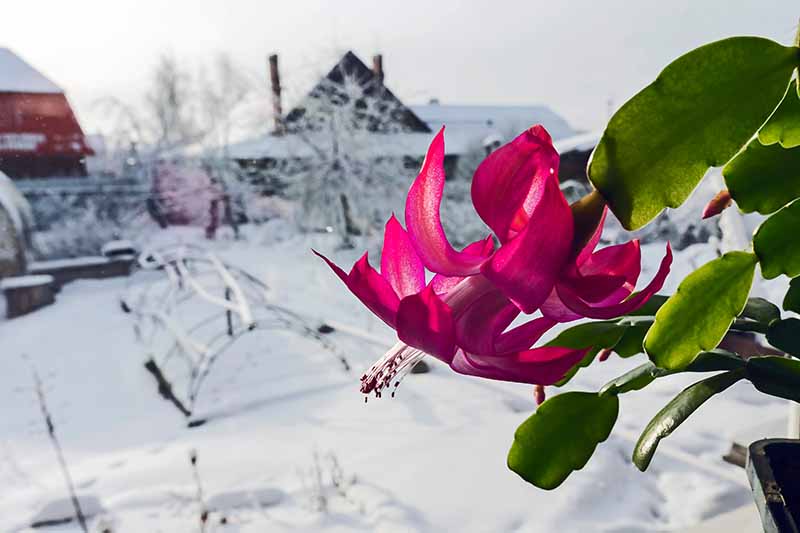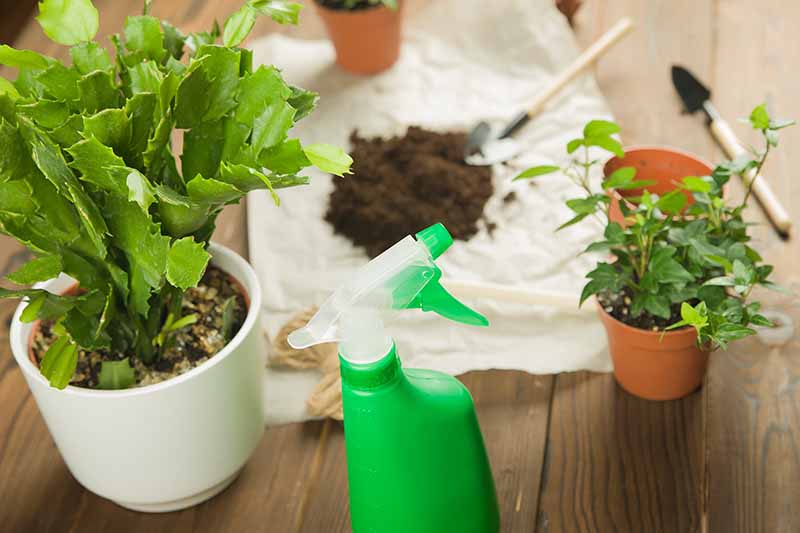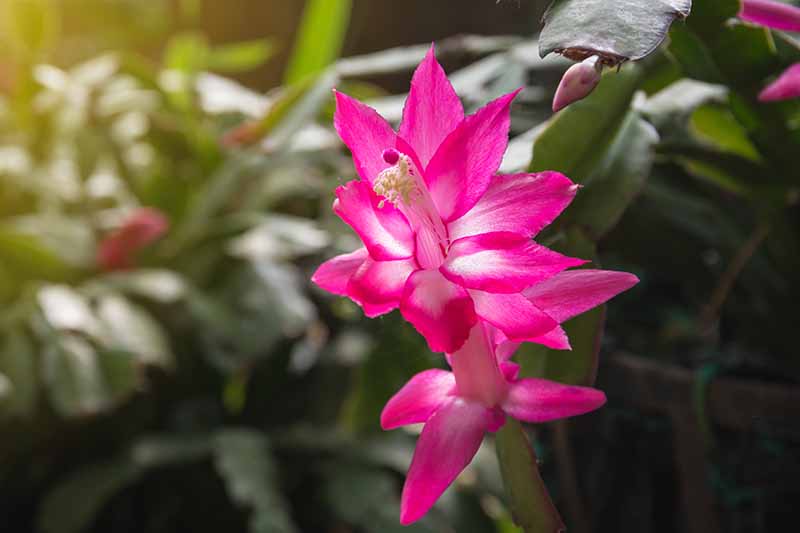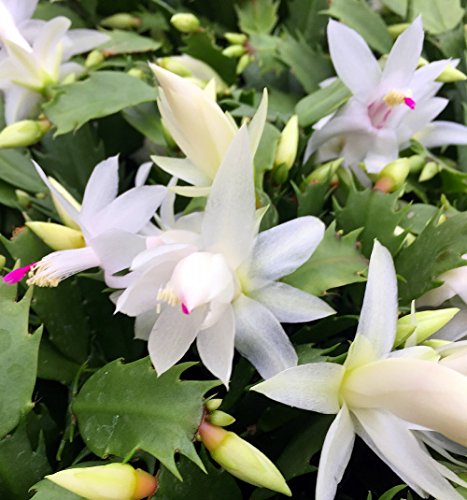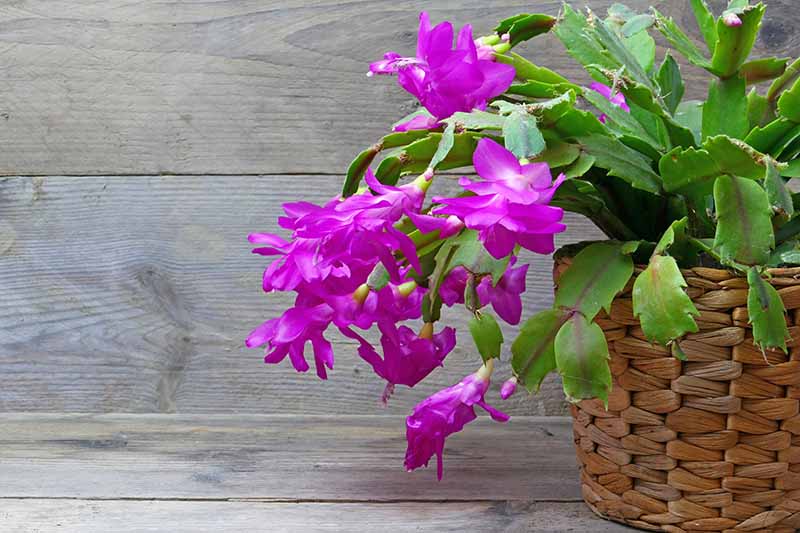And yet, to your surprise, your neglect failed to do it in. So you began a watering routine, and it became one of your cherished houseplants. Christmas cacti are fairly hardy as far as houseplants go. But they do require special conditions to coax out their blooms every year. We link to vendors to help you find relevant products. If you buy from one of our links, we may earn a commission. I’ll cover everything you need to know about growing and caring for this winter-blooming succulent plant.
Cultivation and History
You might be wondering if this pretty succulent is actually a cactus, and the short answer is – yes! However, this houseplant originates from a tropical environment rather than a dry desert, so its care is a bit different than what you may be familiar with for other types of cacti. We’ll get to that a little later.
In addition to being members of the cactus family, Christmas cacti are also epiphytes, meaning they don’t naturally grow in soil, but rather in shallow organic debris found on rocks or in the crevices of tree trunks. The plants in the Schlumbergera genus are all native to the coastal mountains of southeast Brazil, and grow in tropical rain forests where they are pollinated by hummingbirds.
Like other types of cacti, Christmas cacti don’t grow leaves; instead, they have jointed stems made up of flattened segments called cladodes. Flowers grow from the last segment on the end of these stems. Unlike some of their prickly cousins, these cacti do not have sharp spines, which makes handling them less of a thorny issue.
Previously – and mistakenly – known as S. bridgesii, the true Christmas cactus (S. x buckleyi) is a hybrid of two species of Schlumbergera, S. truncata and S. russelliana. This particular cross was created in England at the Rollison Nurseries by William Buckley in the 1840s. These days, many houseplants sold as “Christmas cactus” in garden centers and grocery stores are actually cultivars of S. truncata, more commonly known as crab cactus, false Christmas cactus, or Thanksgiving cactus. As its name suggests, it typically blooms about four weeks earlier than Christmas cactus. There are a couple of surviving cultivars from the original S. x buckleyi, but most plants you’ll find today will be hybrids of the Thanksgiving cactus, S. truncata, and the true Christmas cactus, S. x buckleyi.
Apart from their differences in bloom time, there are a few other ways to distinguish Christmas cacti from Thanksgiving cacti:
Thanksgiving cacti have toothed segment margins; Christmas cacti have scalloped segment margins. Thanksgiving cacti have yellow anthers and pollen; Christmas cacti have pink to purple anthers and pollen. Thanksgiving cacti hold their flowers out horizontally; Christmas cacti have flowers that hang down.
To make things a little bit more confusing, commercial growers sometimes group these different species under the heading “holiday cactus.” This broad term can also include Easter cactus, Hatiora gaertneri, which may look similar, but only flowers once a year around Easter.
If you buy a plant called “Christmas cactus” it could well be a Thanksgiving cactus, or a hybrid of some type. Luckily for us, no matter which species or hybrid you have, the required plant care will be the same. Correctly identifying your specific plant’s species and scientific name is not necessary to enjoy this lovely houseplant. Only the bloom time may be different.
Propagation
While Christmas cacti can be propagated from seed, the easiest and fastest way to propagate them is from cuttings. Propagation from cuttings should be done in the warm growing months, April through September. Wait until at least a month after flowering to take cuttings. Cut stems back at the joints between the fleshy segments, shaping your plant so you don’t leave it lopsided as you take the cuttings. Each cutting should be two to five segments long. Make sure you always cut at the joints and not through the center of a segment, with a clean pair of scissors or a sharp knife. If you’d like, you can dust the ends of your cuttings with rooting hormone powder, but this is not required. Place the cut stem segments in a spot with bright, indirect light and good air circulation to let the cuts heal over and dry out for two to four days before planting. When you’re ready to plant, place the root ends of the cuttings into a container with potting substrate that is moist but not wet. Plant the cuttings about half an inch to an inch deep, or just deep enough so that the cuttings will remain upright. Place the container with the propagated cuttings in a spot that receives bright, indirect light – not direct sun.
After you see some new growth starting to develop, give them some water. It will take three to 12 weeks for the cuttings to become established. You’ll need a bit of patience, as this new plant can take up to two to three years to mature and produce flowers. Find more propagation tips here.
How to Grow
Christmas cactus is actually not all that demanding as a houseplant, so don’t let these care requirements scare you. The most important thing to remember is not to overwater this plant. Providing it with a little extra care, as noted below, will ensure that your plant really thrives.
Water Requirements
Since this plant is native to tropical rain forests, it thrives in an environment with high humidity, but does not appreciate having wet feet. Let the top inch of soil dry out between waterings. Depending on the conditions in your home, this will mean watering every two to three weeks in midwinter. Everyone’s home is a little different, so you’ll need to adjust how often you water based on how warm and dry your home is. When it’s time to water, soak the plant in a sink or tub until water runs out of the pot’s drainage holes. Do not let the pot sit in a saucer full of water – toss any that accumulates underneath after watering. If your home is quite dry, you can provide extra humidity by placing the pot on top of a small container filled with pebbles, then add water to the pebbles. Just make sure the pot is sitting above the water line rather than in the water. As the water evaporates, it will moisten the air around the plant.
Alternatively, you can mist the foliage of your cactus on a regular basis to provide a more humid environment. Water your houseplant regularly when it is budding or in bloom, and less frequently during dormant periods when it is not blooming or putting on new growth. If in doubt, keep in mind that it will fare better being a bit under-watered rather than being over-watered.
Light Requirements
Replicating the natural growing conditions of this houseplant will help to ensure that it thrives in your home. Remember that this plant grows naturally in rain forests, and you should try to provide it with similar light conditions. Bright, indirect sunlight is best. Whether you keep your houseplant indoors all year or give it an outdoor hiatus during the warm months, make sure it is exposed to bright but indirect sunlight.
Don’t let your cactus be scorched by the sun – too much direct sunlight will cause the stems to turn red or purple.
Temperature Requirements
During its growing season – April through September in the Northern Hemisphere – these plants thrive in temperatures between 70 and 80°F. In fall, however, they prefer nighttime temperatures ranging from 55-65°F. These cooler temperatures signal the plant to produce flowers.
Once your plants begin to put out flower buds, avoid sudden temperature changes, which can cause the buds to fall off.
Feeding Requirements
If you’d like to feed your cactus, wait until the active growing season begins. You can give it a liquid houseplant fertilizer, but I like to go the more natural way and give mine a little worm compost. Worm compost provides macro and micronutrients that the plant needs, as well as balancing the soil pH. If you do add compost, just make sure that you don’t raise the acidity of the soil too high, as doing so could cause the stems to rot. And do not feed this plant while it is in bloom.
Tips for Getting Christmas Cactus to Flower
According to the Royal Horticultural Society, getting your Christmas cacti to bloom requires providing these houseplants with two resting periods throughout the year. These resting periods are defined by lower temperatures, longer nights, and less frequent watering. The first resting period should happen six to eight weeks before you expect your plant to flower. It’s worth noting that you can’t force a Christmas cactus to flower at a different time of the year – you can simply take these steps to encourage it to bloom.
During this period, keep your Christmas cactus in a room with bright, indirect light during the daytime, with nighttime temperatures at a chilly 55-60°F, and 13-15 hours of uninterrupted darkness. Also reduce watering, but do not let the soil dry out completely between waterings. Some Christmas cactus owners solve the need for darkness by placing a brown paper bag over their plants, since even exposure to artificial light can prevent flowering. Others move their plants in and out of a closet every day, but this is not recommended – Christmas cacti do not like to be moved frequently, and the stress that this can cause may prevent them from blooming.
For its pre-bloom resting period, I like to place my Christmas cactus in a room on the north side of my house where there is bright, diffused light, and where the temperature remains cooler than in the rest of the house. This is also a room we don’t use in the evening, so my plant also gets enough nighttime hours of darkness. Once your plant begins to produce buds, the first resting period is complete, and you can return it to its normal temperature, light, and watering conditions. Learn more about how to encourage your Christmas cactus to bloom in our guide.
The second resting period is after flowering. Reduce water again and return your plant to a room with cooler temperatures until the growing season begins in April.
Repotting
Considering the conditions they have adapted to in the wild, it makes sense that these houseplants prefer to be slightly pot bound. A good rule of thumb is to plan to repot about every three years in springtime, at the beginning of the plant’s growth season.
Replant in potting soil with good drainage and aeration – 60% potting soil and 40% sand or perlite is recommended. Heavy, waterlogged soils can lead to disease. Read more about selecting the best potting mix for Christmas cactus here. When repotting, handle with care – this plant does not like having its roots disturbed. And remember, this plant does not naturally grow in soil, so make sure to move your plant up to a pot size that is only slightly larger than the existing one when you repot.
Managing Pests and Diseases
Christmas cacti can be attacked by pests and diseases, but healthy plants are unlikely to be a target. Your main strategy in preventing both pests and disease is to make sure you don’t overwater your plant, which can lead to rot and make it more susceptible to disease and insect infestations.
Pests
A strategy I use to keep some of my houseplants pest free is to give them a shower when I water them, and I include my Christmas cactus in this routine. I use the spray nozzle in my sink or shower to wash off the stems, which helps to prevent insect problems.
However, even the most vigilant houseplant owner sometimes experiences a pest outbreak. Pests you will want to be on the lookout for are fungus gnats, flower thrips, and root mealybugs. Inspect your Christmas cacti regularly so that if you do have pests, you can address the problem before they are badly damaged. For more information in determining which creepy crawly is attacking your plant, be sure to check out our supplemental guide: How to Identify and Control 7 Common Christmas Cactus Pests. And also review our article on integrated pest management for thorough guidance to prevent and manage pest problems.
Diseases
According to an article by Judy Stevens at the Iowa State University Extension, Christmas cacti only tend to suffer from diseases when they are over-watered. In overly moist soil, these plants can be targets of certain bacteria and fungi. It may be hard to identify what type of disease is affecting your cactus since many produce the same unhappy results.
Bacterial Soft Rot
Encouraged by high humidity and temperatures over 86°F, Pectobacterium carotovorum is a bacterium that can cause bacterial soft rot in produce and certain houseplants. While types of fungi that may plague this plant can be treated with fungicides, these will prove ineffective against P. carotovorum. You can read more about bacterial soft rot in our full guide.
Damping Off
A water mold that is known for causing damping off in young seedlings, Pythium aphanidermatum may be another possible culprit if your plant has root rot. Phytophthora nicotianae, also a water mold, can cause root rot in many garden plants and some houseplants. As its common name “black shank” suggests, it turns diseased stems black. See our full guide to damping off and how to prevent it.
Fusarium Wilt
Fusarium oxysporum, a soil-borne fungus that causes fusarium wilt, can cause dieback, stem rot, and root rot in these plants. Another fungal plant pathogen, Bipolaris cactivora causes stem rot in cacti.
Cultivars to Select: Your Christmas Cactus Palette
These houseplants come in a wide array of blossom colors. While local garden centers and grocery stores stock these cacti during the holidays, if you’re looking for a specific color, online sources can offer a greater selection of hues.
Red
Red is the most commonly encountered – and expected – bloom color for this houseplant. These festive red blossoms will fit right in with your holiday decor. Red Christmas Cactus in 6-inch Pot
Pink
The vibrant color of the pink blossoms on these plants offers an alternative to the traditional holiday color scheme – and this hot pink hue will be sure to knock your socks off. Pink Christmas Cactus in 6-inch Pot
White
White flowers on Christmas cacti provide more neutral beauty – they can blend in with your holiday decorations, or they can blend in with your usual decor, offering a peaceful vibe. White Christmas Cactus in 4-inch Pot
Yellow
Yellow may be one of the most unexpected colors to see on holiday cacti blooms. I have a soft spot for yellow blossoms, especially the pale yellow that this houseplant comes in, so this is one of my favorites. Yellow Christmas Cactus in 4-inch Pot
Quick Reference Growing Guide
Let that Succa Grow
Whatever color your cactus blooms, it will be a faithful companion to you for decades, provided you offer this vibrant succulent the somewhat neglectful care that it thrives on.
Christmas cacti can live for over 50 years as houseplants, with one spectacular specimen in North Dakota living to be over 111 years old. Do you have an age-old Christmas cactus in your houseplant collection? If so, let us know in the comments – and be sure to post a photo. And be sure to check out all of our Christmas cactus guides including:
Why Is My Christmas Cactus Turning Yellow? What To Do About Woody Stems on Your Christmas Cactus Is Christmas Cactus Toxic to Cats?
Photos by Kristina Hicks-Hamblin © Ask the Experts, LLC. ALL RIGHTS RESERVED. See our TOS for more details. Product photos via Costa Farms, Hirt’s Gardens, and JM Bamboo. Uncredited photos: Shutterstock. With additional writing and editing by Clare Groom and Allison Sidhu.

